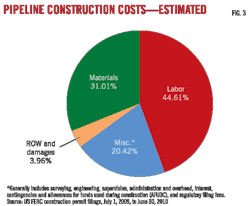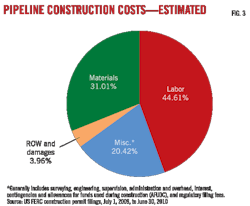Unidentified gunmen ambushed a truck carrying soldiers and civilians in Sudan's Unity State, an oil-producing region whose fields are operated by the Greater Nile Petroleum Operating Co., a consortium led by China National Petroleum Corp.
The attack, which killed 23 people, added to rapidly growing concerns that continued violence could unsettle the semiautonomous region ahead of a vote on independence to be held in January 2011.
Despite such intimidation, however, most observers believe southern Sudanese will vote for secession on Jan. 9 after fighting the north for more than 50 years over issues including religion, ethnicity, ideology—and oil.
Indeed, the distribution of oil resources—who gets what—is a key point of contention between northern and southern Sudanese factions as they negotiate postreferendum arrangements.
The Aug. 11 attack came just days after Sudan's oil ministry signed a new agreement with Luxembourg-based Star Petroleum to explore Block Ea, which covers 50,000 sq km of the Muglad basin, where more than 10 billion bbl of oil have been discovered since the early 1980s.
More to the point, given concerns about the projected breakup of Sudan, Block Ea traverses four southern states: Northern Bahr el-Ghazal, Western Bahr el-Ghazal, Lakes, Warrap, and South Darfur in north Sudan.
Star Petroleum is the first European upstream player to enter Sudan since most Western oil companies pulled out of the country over the course of its decades-long civil war.
"Star Petroleum's decision to invest in Sudan's oil sector marks the first such investment from a European company in years and provides a boost to the industry amid uncertainty surrounding the upcoming secession vote," said one analyst. Underlining his own enthusiasm for Sudan was the head of Star Petroleum, Farshad Zandi, who urged investors to "come and invest in Sudan." Zandi added that "there are many professional people and great opportunities; this is our message to all of the European companies."
Red Sea discovery, seismic
Others also are attempting to maintain an air of optimism ahead of the January referendum on southern independence, among them Sudan's State Minister for Mining and Oil Ali Ahmad Uthman, who announced in early August the imminent onset of oil production off Sudan's Red Sea coast.
The well is one of two begun in February when CNPC commenced drilling the Tokar-1 exploration well in Block 15, located 130 km southeast of Port Sudan. CNPC said Tokar-1 and the other well have a designed drilling depth of 3,700 m in 38 m and 52 m of water, respectively.
Sudan awarded Block 15 in 2005 to a consortium comprised of five firms including CNPC 35%, Malaysia's state-owned Petronas 35%, Sudan's state oil firm Sudapet 10%, Nigeria's Express Petroleum 10%, and Sudanese firm High Tech Group 10%. At the time of the award, Petronas said that CNPC and its partners would drill five wildcat wells with total minimum expenditure of $58 million over 6 years.
Meanwhile, press reports earlier this year indicated that Saudi Aramco was floating a tender for a seismic survey in Saudi waters of the Red Sea, far from any established oil production in Saudi Arabia. The company was said to be interested in surveying 5,400 sq miles.
Sudan's oil production
The announcement concerning production from the Red Sea followed earlier reports that Sudan is maintaining its oil output around 500,000 b/d and intends to hold that level or even increase it thanks to enhanced oil recovery techniques.
Salah Hassan Wahbi, CEO of Sudapet, said the country's production is currently at the same level as 2009's average of 500,000-520,000 b/d and that the main goal at the moment is to sustain that level. The use of enhanced oil recovery technologies will enable Sudapet to achieve an additional 7% in oil recovery, which could mean an extra 1 billion bbl of oil in reserves in the next 7-9 years, Wahbi said.
He also said that Sudapet wants to become operator of Block C in western Sudan as part of its strategy to have an operating block by yearend 2011. But he acknowledged that exploration of the block has so far been disappointing.
Wahbi said Sudapet was to bring in a new team in August to review available data to determine how hydrocarbons can be found. Based on discoveries at a neighboring block, he said Sudapet expects to find 28-30° gravity oil on Block C. He did not speculate on reserves.
Meanwhile, Wahbi said that a Turkish energy company and a Finnish company have taken stakes through a farmout of Block 14, in Sudan's north bordering Egypt and Libya and that Sudapet has kept just a 20% stake since the area is unexplored.
Sprawling Block 14, from east of the Nile to as far as 900 km northwest of Khartoum, includes part of the frontier Mesaha Trough, where exploration is just starting in Egypt.
Oil pipeline to Kenya
As for the coming referendum on Southern independence, Wahbi noted that while the resources may be in the southern areas, the infrastructure for exporting them is in the northern area, an attempt to suggest the futility of independence for the south.
That may be, but it has not stopped speculation about the construction of an oil pipeline from southern Sudan to a new port development planned for Lamu on Kenya's Indian Ocean coast.
The pipeline proposal, made by Japan's Toyota Tsusho, the trading subsidiary of automaker Toyota, means that southern Sudan might just be able to ease away from dependence on the north after any vote on secession.
Shift in oil blend quality
Indeed, the numbers concerning Sudan's oil production and exports suggest that secession supported by such a pipeline would hurt the north considerably.
Citing figures of the Ministry of Finance and National Economy for March 2010, the London-based Economist Intelligence Unit (EIU) said the data indicate a continuation of the trend of declining output of Nile Blend oil from Muglad basin Blocks 1, 2, and 4 and increasing output of the less valuable Dar Blend from Blocks 3 and 7 in the Melut basin.
The EIU said that the changes in output since June 2009 have left total output more or less steady, at around 480,000 b/d. But the analyst also noted an interesting shift in the pattern of Sudan's oil production.
The EIU noted that in March, Nile output was 153,000 b/d, down from 181,000 b/d a year before and from 221,000 b/d in March 2008. In contrast, it said, Dar output was 271,000 b/d in March 2010, up from 208,000 b/d in March 2009 and 189,000 b/d in March 2008.
"The shift from Nile to Dar also means that a larger share of Sudan's oil is now being produced in the South," the EIU concluded, noting that is about 78% as the Dar fields are entirely in Upper Nile State whereas the Nile fields straddle the North-South border with a roughly 40:60 split in production.
At this point, the South looks to be the future when it comes to exploration and production of oil in Sudan.
More Oil & Gas Journal Current Issue Articles
More Oil & Gas Journal Archives Issue Articles
View Oil and Gas Articles on PennEnergy.com



